
Why Swiss carbon-removal start-up Climeworks faces serious headwinds
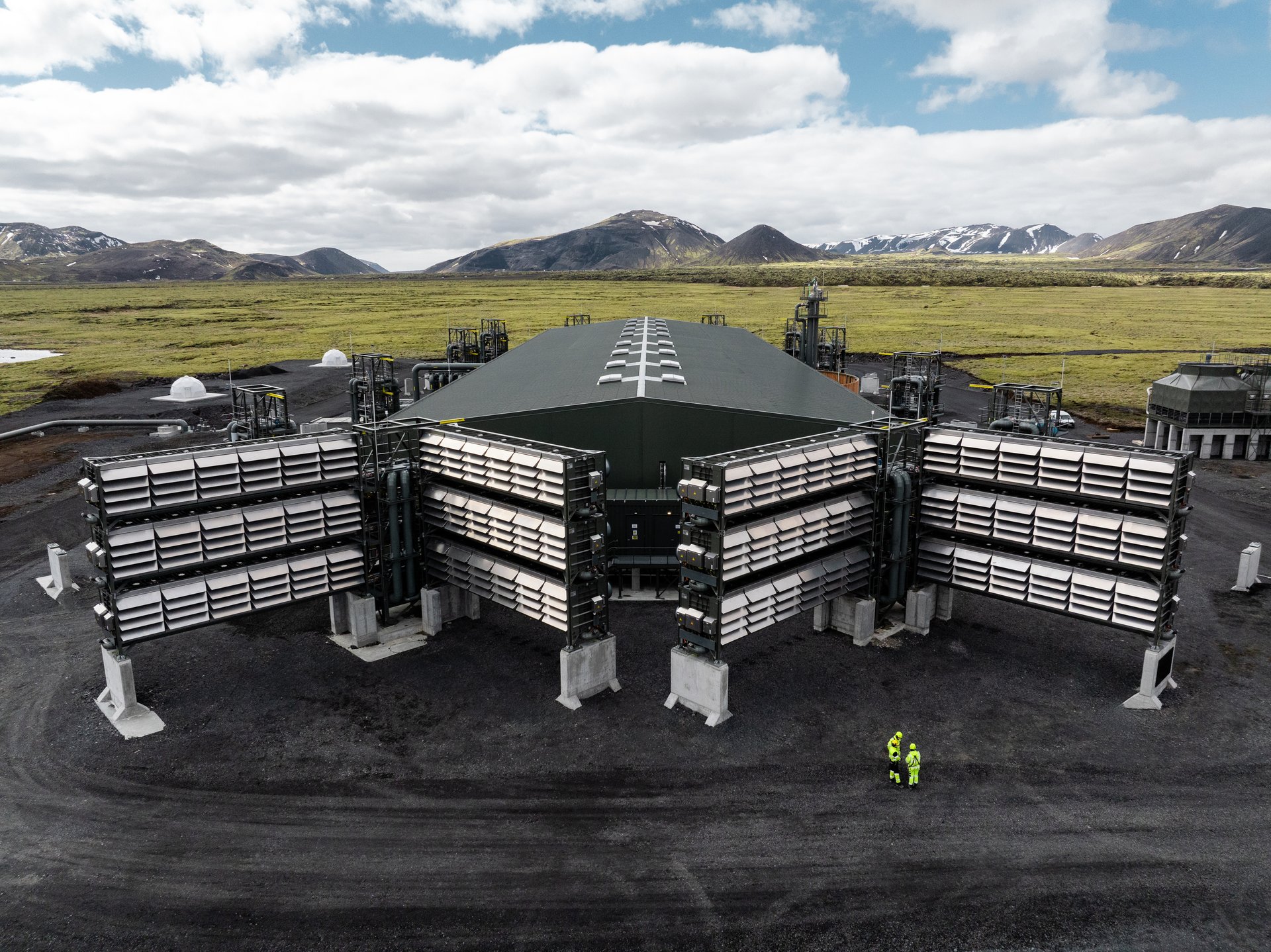
Climeworks, a Swiss start-up that specialises in sucking carbon out of the air, says it must cut 20% of its global workforce to stay competitive. Why is the “direct-air-capture” (DAC) pioneer taking such a drastic step even as the technology remains essential to addressing climate change?
Why is Climeworks in the headlines?
The company confirmedExternal link on Wednesday it will slash 106 of 498 jobs – 78 in Switzerland – to compete in the “challenging” DAC sector.
“After a phase of strong growth, Climeworks is proactively adapting its organisation to maintain agility and efficiency,” the Zurich-based start-up said in a statement.
Despite this major setback, the carbon removal firm says it remains firmly focused on the long term.
“Today, Climeworks is positioned well technologically and commercially. Climeworks will continue to take its core technology to the next level and will further diversify its commercial offering to broaden its market impact and to solidify its position as the undisputed CO2 removal leader,” it added.
The downsizing came one week after journalists in Iceland revealedExternal link that the company’s two flagship plants have underperformed. Climeworks says the job cuts are unrelated.
Why is Climeworks downsizing?
The start-up operates two DAC plants in Iceland (Orca and Mammoth) and plans a third (Cypress) in Louisiana, US. It says the job cuts reflect economic uncertainty and slower momentum in climate technology.
Climeworks says the downsizing has been influenced by uncertainty about the new plant and expansion plans in the US, where President Donald Trump has gutted federal climate efforts, rolled back regulations at limiting pollution and pushed to scrap incentives for clean energy projectsExternal link. Carbon capture technologies have so far not faced similar scrutiny from Trump, but uncertainty prevails. Climeworks CEO Jan Wurzbacher told SWI swissinfo.ch in a recent interview that his company “does not know at this stage” what impacts his presidency could have on business.
>> Our recent interview with Climeworks CEO Jan Wurzbacher.

More
‘To meet our carbon removal target by 2050, we need 1,000 large plants!’
Before Trump took office, the US Department of Energy had already committedExternal link to Climeworks’ US project worth $500 million (CHF412 million). Construction was scheduled to begin in 2026. In a recent interview with Swiss public broadcaster, SRF, Wurzbacher said US government funding cuts had made it difficult to find contacts “to be able to clarify the project’s further progress in the short term”. But he added: “We are not currently aware that our project would be stopped.”
Wurzbacher admitted that current financial resources were “limited”.
“We’ve always known this journey would be demanding,” said Wurzbacher and fellow CEO Christoph Gebald, former engineers at the federal technology institute ETH Zurich who founded the company in 2009, in a joint statement. “Today, we find ourselves navigating a challenging time.”
What contributed to Climeworks’ struggles?
Katrin Sievert, a climate finance and policy PhD researcher at ETH Zurich, says Climeworks is in a difficult phase between early-stage funding and large-scale deployment. While early support enabled the Orca and Mammoth plants, US funding uncertainty has stalled Cypress, she told SWI swissinfo.ch.
Much of this was expected to come from US federal programmes such as the Inflation Reduction Act. The current US administration’s intention to freeze $500 million in support has created considerable uncertainty and likely disrupted these plans. The DAC business model – capital-intensive infrastructure backed by long-term carbon credits – is vulnerable to political shifts, said Sievert.
DAC plants are expensive, complex systems. But Climeworks’ technology has not yet performed at the scale originally hoped for, and the learning curve in reducing costs has proven slower than anticipated, she said.
Capturing CO2 directly from the atmosphere is much more difficult and costly than, for example, taking flue gas from a power station or a cement plant. This contributes to DAC’s higher energy needs and costs relative to these applications. Climeworks once aimed to cut costs to $100 per ton by 2030 but now targets $300. The current cost of the energy-intensive process is more than triple that.
“Investor interest in direct air capture seems to be shifting into a more cautious and results-driven phase, likely influenced by recent changes in climate policy,” Sievert added.
A recent analysis by the market intelligence company AlliedOffsetsExternal link highlighted current DAC difficulties and sentiment within the sector.
“2025 has seen a turbulent start for carbon dioxide removal. The Trump administration is rolling back many of the promises made in the previous four years, while purchasing activity and investor appetite have been disappointing,” analyst Pranav Balaji commented.
>> A look at progress at Climeworks’ Orca plant in Iceland, one year into its operation.
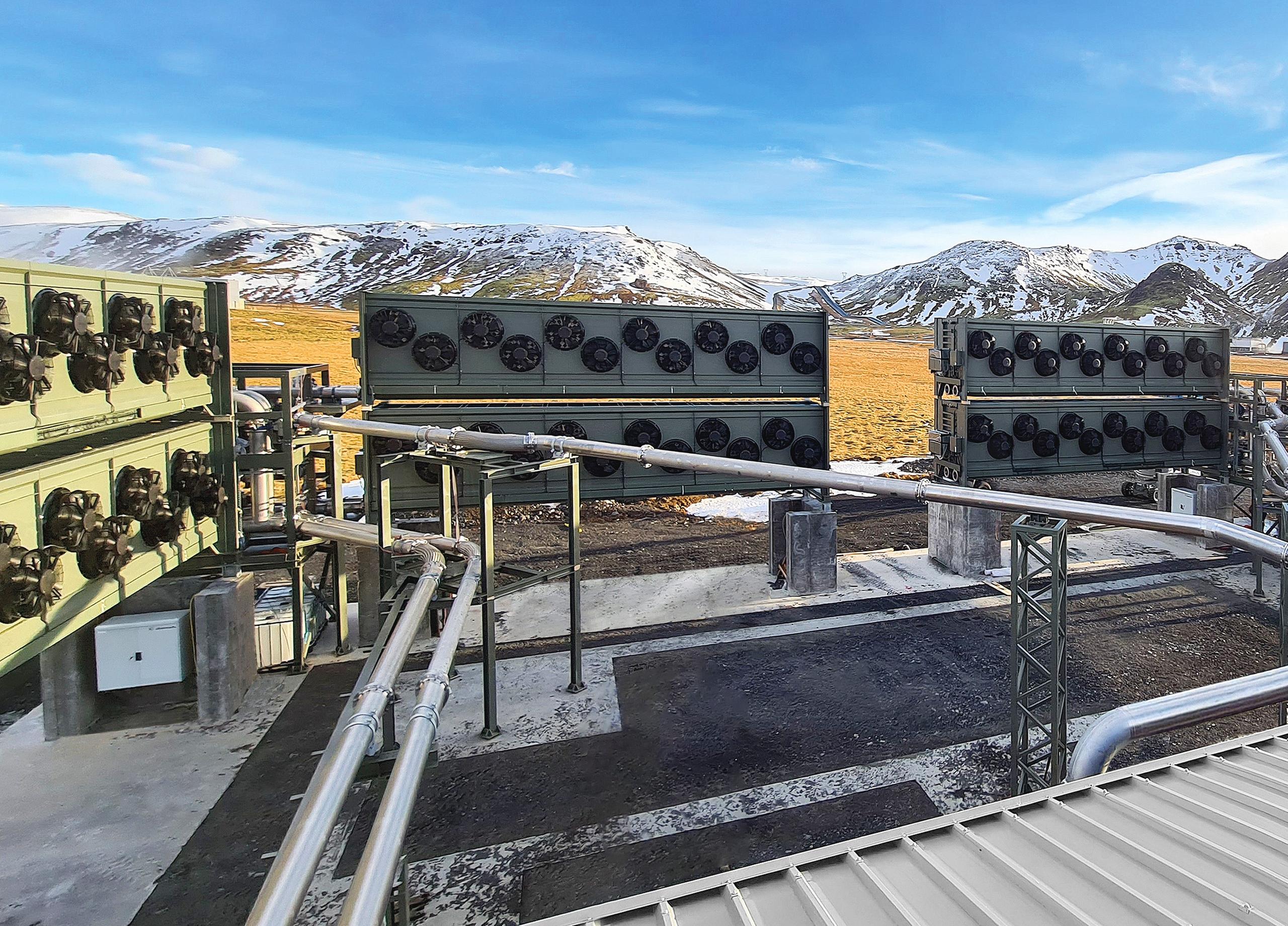
More
Carbon capture: ‘The road to gigatonne capacity is an ambitious journey’
Despite challenges on the demand side, DAC deployment continues to surge, says AlliedOffsets. A total of 84 DAC plants are expected to be operational by the end of 2025, rising to 114 by 2032. This year should also see the launch of 1PointFive’s StratosExternal link in Texas, which is insulated from Trump’s cuts due to its reliance on private investment, and is set to become the world’s largest DAC plant to date.
Glen Peters, a climate scientist at Cicero research institute in Norway, told The Guardian: “The fortunes of carbon dioxide removal startups will go up and down over time, but this is a sharp reminder that the only show in town for the next decades is to reduce emissions.”
How do direct-air capture technologies work?
DAC technologies extract CO2 directly from the atmosphere at any location, unlike carbon capture which is generally carried out at the point of emissions, such as a steel plant. The CO2 can be permanently stored in deep geological formations or used for a variety of applications.
Climeworks’ technology acts like a giant CO2 “vacuum cleaner”. The Orca plant in Iceland, for example, is located near the capital, Reykjavik, and is powered by electricity generated by a nearby geothermal power plant. The carbon collectors draw air in through a fan, before it is passed through filters that trap the CO2. The CO2 is then mixed with water and pumped into basalt rock layers at a depth of 800 to 2,000 metres, where it is expected to remain for millions of years.
Companies and individuals can purchase Climeworks’ CO2 removal services on a per-tonne basis and receive carbon removal certificates. This model has gained traction among firms seeking more credible ways to compensate their emissions than traditional carbon offsets. Climeworks has 160 customers and investors, including UBS, Swiss Re, BCG, Microsoft, JPMorgan Chase, Shopify, Stripe, H&M Group and LEGO. Investors have put $840 million into the firm.
Why do we need DAC technology?
To achieve climate neutrality by 2050, we must not only cut emissions and replace fossil fuels with renewables but also remove billions of tonnes of CO2 from the atmosphere using so-called net-emissions technologies (see infobox).
Carbon capture and storage (CCS) captures and stores fossil and process-based CO₂ at installations such as waste treatment plants to cut emissions, while negative emission technologies (NETs) focus on permanently removing CO₂ from the atmosphere.
NETs include planting and restoring forests; land management to increase and fix carbon in soils via additives such as biochar; bioenergy production with carbon capture and storage (BECCS); enhanced rock weathering (by taking carbon out of the air and storing it in rocks); direct capture of CO₂ from ambient air with CO₂ storage (DACCS), ocean fertilisation to increase CO₂.
According to the Intergovernmental Panel on Climate Change (IPCC), achieving the goals of the Paris Agreement will require a very rapid global expansion of CCS and NETs, in addition to a substantial reduction in greenhouse gas emissions.
Both the International Energy Agency (IEA) and the United Nations Intergovernmental Panel on Climate Change (IPCC) say DAC and other CO2 capture and storage technologies are “indispensable” for limiting global warming to 1.5°C and achieving climate neutrality by 2050.
Current DAC plants capture about 10,000 metric tons of CO2 yearly. But the IEA callsExternal link for 80 million tons by 2030 and over a billion by 2050.
How are Climeworks’ plants performing?
The investigation by Icelandic journalists, which claimed operations at its two plants in Iceland had drastically underperformed, has raised serious questions.
The company’s Mammoth plant in Iceland, which Climeworks says will be able to remove 36,000 tons of carbon dioxide a year when fully ramped up, captured 750 tons in the first ten months since opening, according to the company. Meanwhile, the smaller and longer-running Orca plant, which has a capacity to remove 4,000 tons per year, has failed to reach 1,000 tons of net removals in any year since it began operations in 2021.
Climeworks doesn’t deny the problems. Wurzbacher told SRF that the technology works but the plants in Iceland are not yet performing as they should, partly due to technical issues encountered in the real environment such as ice and snow causing mechanisms to freeze.
“As it often goes with any new infrastructure, we’ve encountered early mechanical issues that we’re actively addressing with upgrades already under way,” a spokesperson recently told The Guardian.
>> Where should CO₂ from Swiss household waste and industry be stored in the future – in Switzerland or pumped beneath the North Sea? An article about a Zurich pilot project that hopes to clarify the ideal strategy.
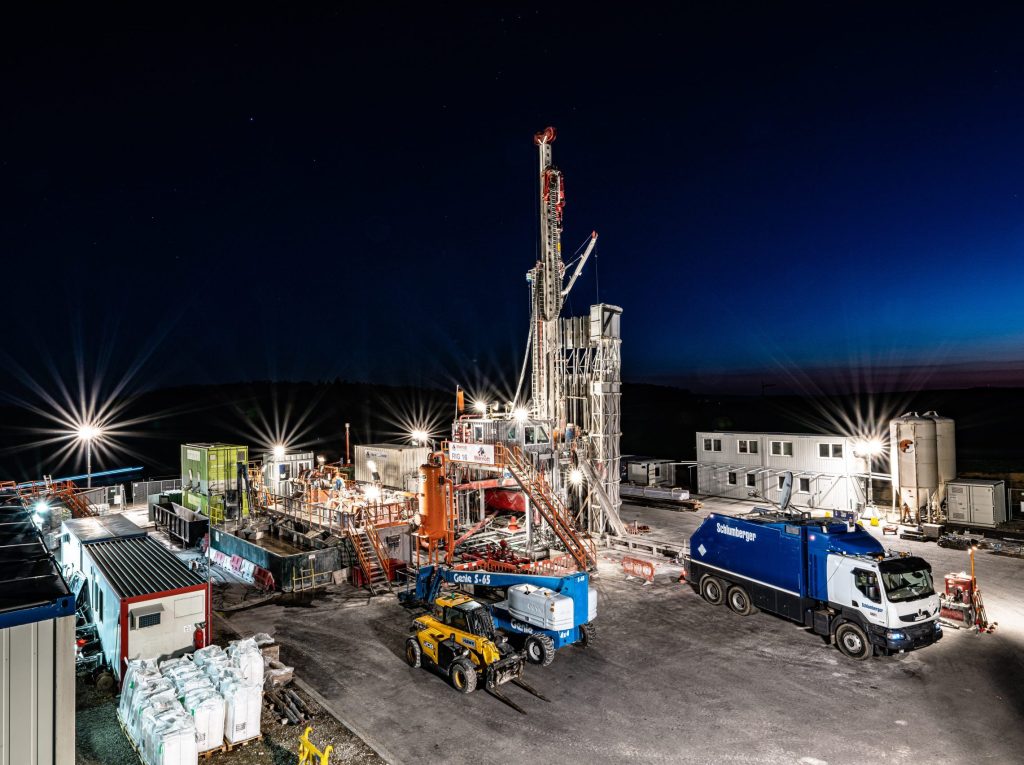
More
Zurich project explores storing CO₂ beneath Switzerland
Edited by Veronica De Vore/ds

In compliance with the JTI standards
More: SWI swissinfo.ch certified by the Journalism Trust Initiative





























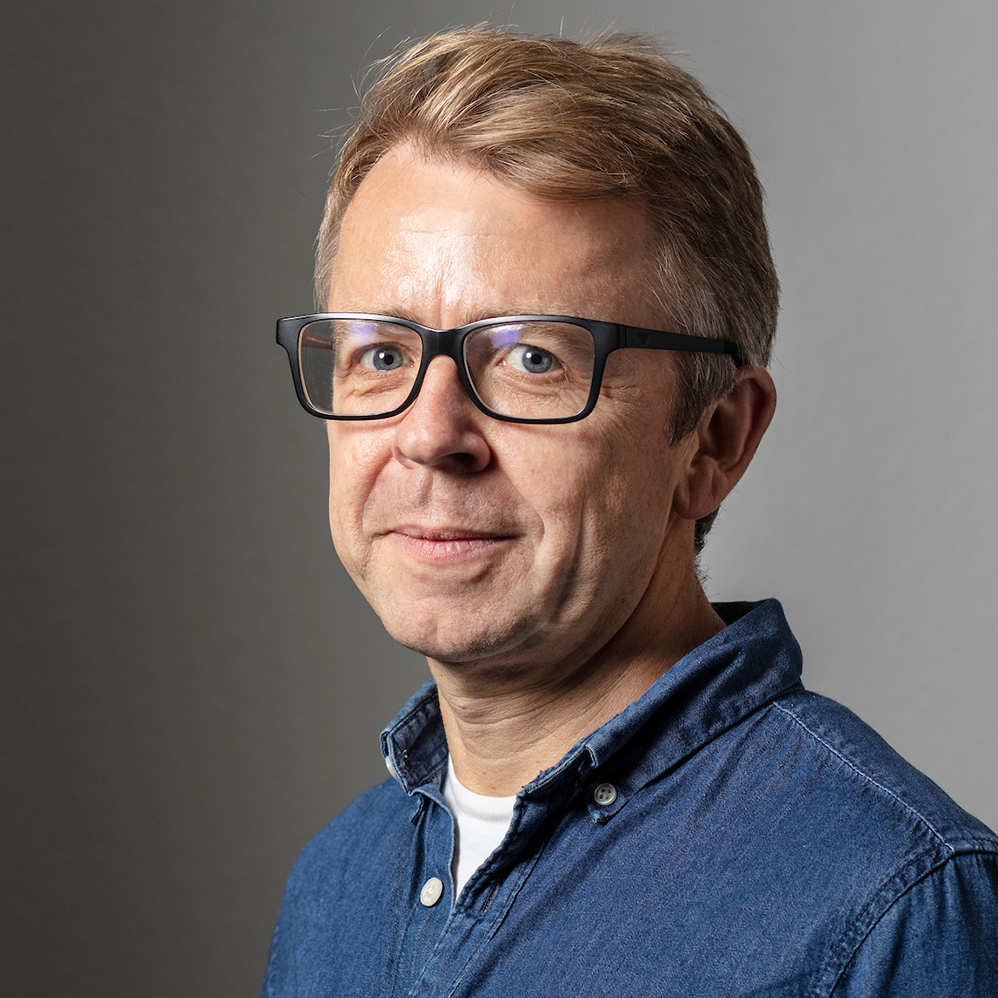













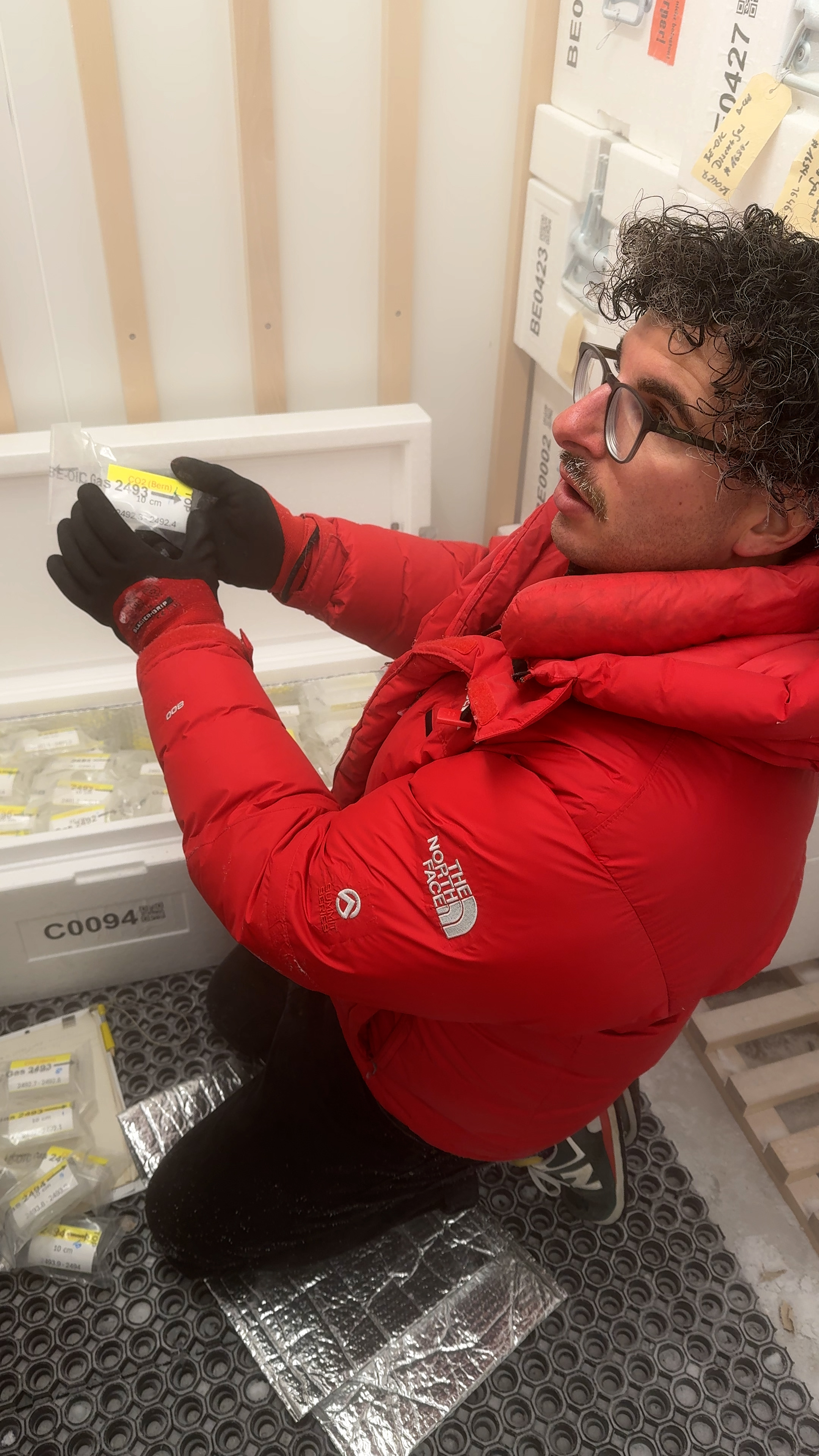





You can find an overview of ongoing debates with our journalists here . Please join us!
If you want to start a conversation about a topic raised in this article or want to report factual errors, email us at english@swissinfo.ch.